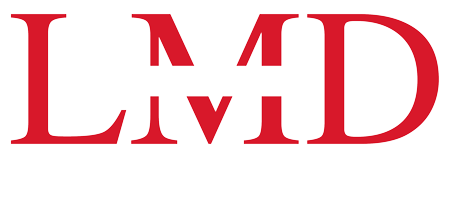Sanith de S. Wijeyeratne
Taking stock of carbon emissions
The lack of regulatory requirements gives errant companies an excuse not to bother to accurately measure emissions

A leading advocate of corporate sustainability in the Asian region, Sanith de S. Wijeyeratne counts over a decade of experience in corporate sustainability.
Presently, he serves in the roles of Director and CEO of the Climate & Conservation Consortium (CCC) in Sri Lanka, Director and CEO of CCC Consultancy in the UAE, and CEO of the Conservation Carbon Company.
Wijeyeratne was the recipient of the Global CSR Leadership Award in 2017 and Asian Sustainability Leadership Award in Thailand in 2024, on behalf of CCC. Under his stewardship, CCC was recognised as the ‘Best Provider of Environmental Solutions in the Middle East – Asia’ by the World Leadership Federation.
In this exclusive interview with LMD International, Wijeyeratne sheds light on organisational carbon emissions and his assessment of Sri Lankan corporates in reporting them.
Q: How would you describe the term ‘organisational carbon emissions’? And can you elaborate on the activities that result in these emissions?
A: The international benchmark against which we measure an organisation’s footprint is the Greenhouse Gas Protocol (GHG Protocol). This provides a standardised framework for measuring and managing greenhouse gas (GHG) emissions.
When determining an organisation’s carbon footprint according to the GHG Protocol, emissions are classified into three categories: Scopes 1, 2 and 3. Each scope represents different sources of emissions.
Scope 1 is defined as direct GHG emissions – these are from sources that are directly owned or controlled by the organisation. These usually arise from company owned vehicles, generators and air conditioners.
And Scope 2 is indirect GHG emissions from energy. These are emissions from the generation of purchased energy – primarily electricity, heat or steam – consumed by the organisation.
Scope 3 is the most complex and encompasses all other indirect emissions resulting from the organisation’s activities but occurring from sources not owned or directly controlled by the company. These emissions often account for the majority of an organisation’s total carbon footprint.
Additionally, Scope 3 is further divided into 15 categories, some of which are inward and outward logistics, use of the companies’ products, purchase of capital goods, business travel and employee commutes to name a few.

Q: How have Sri Lankan companies been doing in terms of measuring and reporting on these emissions?
A: While a few companies are measuring and reporting on emissions, most of them unfortunately do not – and if they do, they only report on Scopes 1 and 2.
The typical argument I have encountered is that Scope 3 emissions arise from sources not controlled or owned by the company and therefore, should not be classified as part of its emissions.
And the lack of regulatory requirements gives errant companies an excuse not to bother to accurately measure emissions as there are no negative impacts of their failure to do so.
However, this is changing and companies will soon find that they can no longer offer such excuses in the future.
Q: Can you elaborate on the upcoming sustainability reporting changes and what companies now need to know?
A: The International Sustainability Standards Board (ISSB) is an initiative established by the International Financial Reporting Standards Foundation (IFRS) to develop a comprehensive global framework for sustainability reporting.
IFRS S1 and S2 are the first two sustainability related disclosure standards issued by the ISSB.
IFRS S1 is the General Requirements for Disclosure of Sustainability-related Financial Information.
This standard sets out the core principles for sustainability related disclosures. It requires companies to provide material information about all significant sustainability risks and opportunities that could affect their financial performance and position over time.
IFRS S2 tackles climate related disclosures, focussing on climate related risks and opportunities.
This standard aligns with the Task Force on Climate-related Financial Disclosures (TCFD) recommendations, and requires companies to disclose information on how climate risks and opportunities may impact their financial position.
Both IFRS S1 and S2 aim to harmonise sustainability reporting to enhance transparency, comparability and decision useful information for investors.
In Sri Lanka, the national accounting standard setter – the Institute of Chartered Accountants of Sri Lanka (CA Sri Lanka) – has issued localised versions of these standards, designated as SLFRS S1 and S2, which have been effective since 1 January.
Under these standards, companies will have to identify sustainability and climate related risks and opportunities that could affect their prospects. They will also have to specify the time period as short, medium or long term, during which identified risks and opportunities are expected to occur.
Local businesses are underprepared to integrate climate related financial risks into their overall risk management frameworks

Q: What challenges do Sri Lankan companies face when aligning their financial reporting with climate change requirements?
A: The biggest challenge is to convince corporate management and boards of directors to green light the use of sufficient financial resources to carry out these tasks. Since it wasn’t required, companies ignored this.
Local businesses are underprepared to integrate climate related financial risks into their overall risk management frameworks and will be challenged in meeting these conditions.
Q: And how do the new financial reporting standards align with Sri Lanka’s broader environmental policies and commitments under international climate agreements?
A: Sri Lanka has set significant nationally determined contributions (NDCs) and ambitious carbon reduction targets as a nation.
A key part of these efforts will focus on companies actively playing their part in tracking and reducing emissions. So there is a high degree of congruence between national policies and international agreements.

Q: What roles do investors and stakeholders play in encouraging companies to adopt comprehensive carbon emission reporting?
A: Globally, investors and stakeholders are now requiring the companies they’re affiliated with to disclose carbon emissions, as they do not want to be associated with highly polluting organisations.
So they play an active role in forcing companies to make these disclosures.
Q: What steps should companies take to ensure accurate and transparent Scope 1, 2 and 3 emission reporting?
A: Companies should carry out a comprehensive baseline assessment based on the international protocols using real data rather than broad spend based estimates, have those calculations validated by subject experts and undertake independent verification by an accredited body.
This way, there is a high degree of accuracy in the results.
Q: How do you foresee these changes influencing the global competitiveness of Sri Lankan businesses in sectors like manufacturing and exports?
A: Sri Lanka can’t compete with the likes of China, India and Vietnam on cost. Our supply chains have to compete on high quality and ethical production.
I see the changes paving the way for Sri Lanka to position itself as a sustainable destination for production and travel alike – if they’re done properly.
Q: And how are auditors and finance professionals adapting to the inclusion of carbon emissions in financial statements?
A: This is still very new to the local finance sector and many professionals are looking for guidance. Hopefully they will take meaningful measures soon, rather than suffer the consequences of noncompliance.
Sri Lanka has set significant nationally determined contributions (NDCs) and ambitious carbon reduction targets as a nation
FACT FILE
FAMILY
Wife – Ashuntha
Son – Sahein
SCHOOLING
St. Peter’s College
HIGHER EDUCATION
Sri Lanka Law College
Postgraduate Institute of Management (PIM)
Executive education – Harvard University
Executive education – Stanford University
PRESENT OCCUPATION
Director and CEO – Climate & Conservation Consortium (Sri Lanka)
Director and CEO – CCC Consultancy (UAE)
CEO – Conservation Carbon Company
COUNTRIES OF RESIDENCE
Sri Lanka
UAE
CITIES OF RESIDENCE
Colombo (Dehiwela)
Dubai
SRI LANKA SWOT ANALYSIS
STRENGTHS
High level of education and qualifications in the workforce
New progressive governance in the offing
Some world-class industries that can lead the way in creating more sustainable industries
WEAKNESSES
Lack of high-level commitment among corporate management and boards of directors
Lack of awareness at all levels of development in the fields of the environment and sustainability
Legacy government infrastructure and staff who are not willing to change (or in some cases, even perform the work they’re supposed to do)
OPPORTUNITIES
Positioning Sri Lanka as a sustainable destination (by taking proper measures rather than greenwashing)
Establishing Sri Lanka as a green supply chain destination
Leading the region in its net zero journey and demonstrating its capabilities
THREATS
Continuing culture of bribery and corruption
Willingness of private sector to only pay lip service to environmental protection while avoiding taking meaningful action
Ongoing failure of state and local government to protect the country’s existing environmental resources
